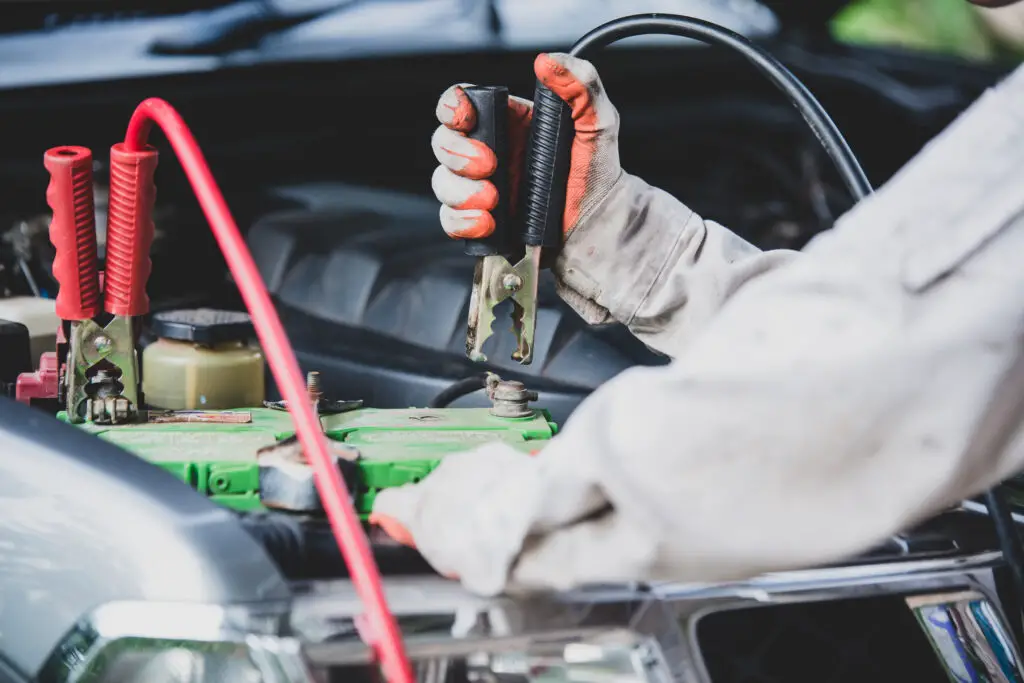Wondering if you can jumpstart a car with a bad alternator? A dead car at the wrong time can throw a wrench into your plans, and when it’s caused by a bad alternator, the frustration multiplies.
While jumpstarting is a common quick fix for a drained battery, can it save you when the alternator’s the culprit? Let’s unravel the mechanics and practicalities of jumpstarting a car with a faulty alternator in this detailed guide.
Understanding the Relationship Between Battery and Alternator
To understand whether you can jumpstart a car with a bad alternator, let’s first revisit the basics:
- The Battery: Provides the initial power to start your car and supports electrical systems when the alternator is not functioning.
- The Alternator: Recharges the battery and powers electrical systems once the engine is running.
If the alternator fails, the battery is forced to supply all the power. This is a losing battle since car batteries are not designed to handle sustained demand. Eventually, they’ll drain, leaving you stranded.
Can You Jumpstart a Car with a Bad Alternator?
The short answer is yes, but it comes with caveats and risks. Here’s how it works:
- Jumpstarting with External Help: Connecting your car’s battery to another vehicle or a jumpstart pack can give it the jolt it needs to start.
- Temporary Power Supply: Once the engine runs, the battery provides power until it’s completely drained again—which may happen quickly without a functioning alternator.
How to Safely Jumpstart a Car with a Bad Alternator

If you’re in a pinch, follow these steps carefully:
- Gather the Tools:
- Jumper cables or a jump starter pack.
- A donor vehicle with a healthy battery (if using cables).
- Park Safely:
- Ensure both vehicles are off and parked on a flat surface.
- Engage the parking brake.
- Connect the Jumper Cables:
- Attach the red clamp to the positive terminal of the dead battery.
- Attach the other red clamp to the positive terminal of the donor battery.
- Connect the black clamp to the negative terminal of the donor battery.
- Connect the remaining black clamp to an unpainted metal surface on the dead car.
- Start the Donor Vehicle: Let it run for a few minutes.
- Start the Dead Car: Turn the ignition on and let it run.
- Disconnect Safely: Remove the cables in reverse order.
Important: This process is a temporary fix. Your car might run for a short while, but without an alternator, the battery will soon deplete.
Risks of Driving with a Bad Alternator
If you manage to get the car running, you’re not out of the woods. Driving with a bad alternator is risky:
- Complete Electrical Failure: The battery can’t sustain the electrical load indefinitely.
- Loss of Critical Systems: Power steering, brake assistance, and lights may fail without warning.
- Potential for Further Damage: Draining the battery repeatedly can permanently damage it.
What Are Your Options?
If your alternator is bad, consider these next steps:
- Immediate Repair: Have the alternator replaced or repaired as soon as possible.
- Towing: If jumpstarting isn’t viable or the car stalls again, call for a tow to the nearest repair shop.
- Portable Power Solution: A portable jump starter pack might give you enough juice to reach a safe location.
Pro Tips to Avoid Alternator Troubles
- Regular Maintenance: Include the alternator in your routine inspections.
- Monitor the Battery Warning Light: Address issues early to avoid bigger problems.
- Inspect Belts and Connections: A slipping or broken serpentine belt can mimic alternator failure.
Final Thoughts
Jumpstarting a car with a bad alternator is a short-term solution at best. While it can help you get to a safe location, it’s no substitute for proper repairs. Understanding the limits of your vehicle’s electrical system and addressing issues promptly will save you time, money, and frustration in the long run. Have you ever faced alternator woes? Share your experiences and tips in the comments below
Discover more from Chikwem
Subscribe to get the latest posts sent to your email.